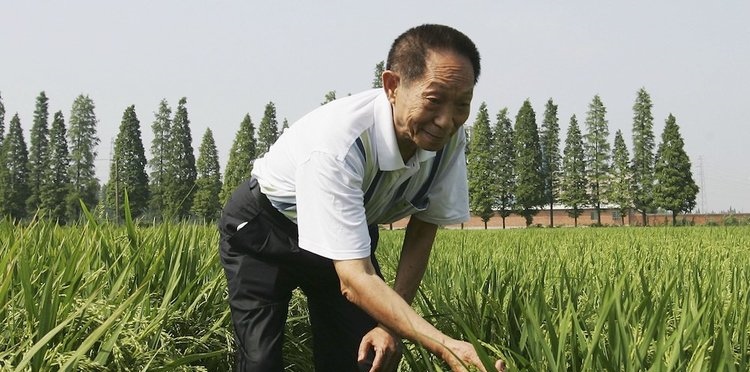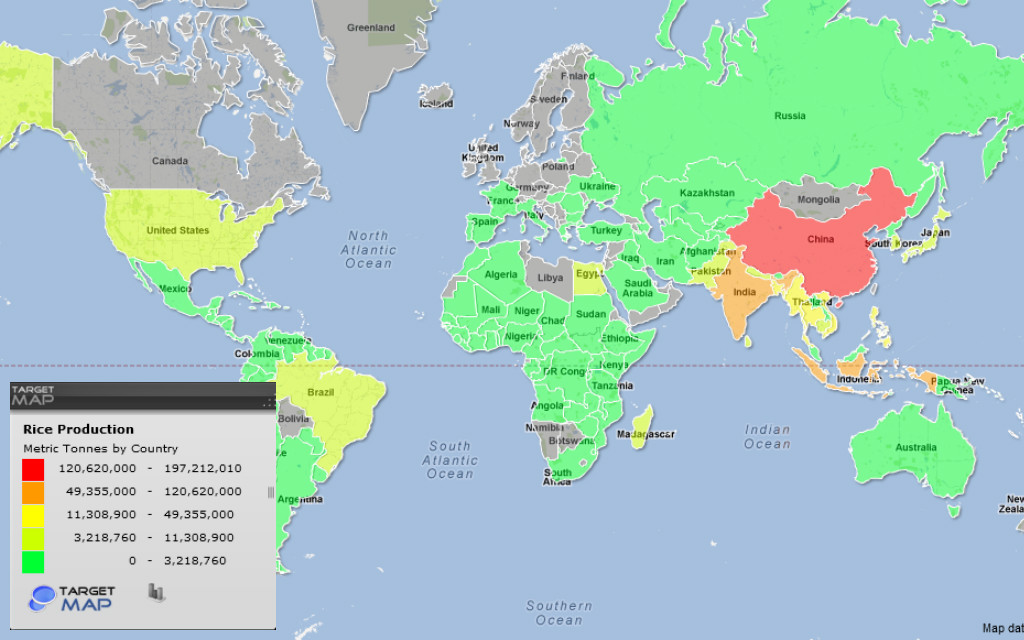A solution to food shortages
October 31, 2018 | Expert Insights

Chinese scientists have developed the technology to grow rice using seawater. The successful harvest of this salt-resistant strain has raised researchers hopes that one-day large swathes of the desert could be turned into paddy fields.
Background
Rice is the seed of the grass species Oryza sativa (Asian rice) or Oryza glaberrima (African rice). As a cereal grain, it is the most widely consumed staple food for a large part of the world's human population, especially in Asia, where 90% of rice is consumed. In that part of the world, ensuring there is enough affordable rice for everyone or rice security, is equivalent to food security. Food security is the state of having reliable access to a sufficient quantity of affordable, nutritious food. In Africa and Latin America, rice is becoming a more important staple too. Rice, a monocot, is normally grown as an annual plant, although in tropical areas it can survive as a perennial and can produce a ratoon crop for up to 30 years. Rice cultivation is well-suited to countries and regions with low labour costs and high rainfall, as it is labour-intensive to cultivate and requires ample water. However, rice can be grown practically anywhere, even on a steep hill or mountain area with the use of water-controlling terrace systems. Although its parent species are native to Asia and certain parts of Africa, centuries of trade and exportation have made it commonplace in many cultures worldwide.
Today, the majority of all rice produced comes from China, India, Indonesia, Bangladesh, Vietnam, Thailand, Myanmar, Pakistan, Philippines, Korea and Japan. Asian farmers still account for 87% of the world's total rice production.

Analysis
More than half the global population relies on rice to survive, but meeting that demand is difficult due to the increasing scarcity of freshwater, which is required for rice cultivation. While scientists in some countries where water shortages are a serious concern, such as Israel or Australia, have been developing desalination techniques to convert seawater for use in agriculture, China has been working to develop strains of salt-resistant rice for the past four decades. Chinese scientists developed a new high-yield strain of rice that grows in saltwater. They have harvested alkali-resistant ‘sea rice’ planted in east China’s Shandong Province, marking the initial success of an ambitious plan to boost the country’s rice production and feed an additional 80 million people.
The new type of rice, successfully harvested by a group of scientists in the seaside city of Qingdao, eastern China, was revealed a year ago. Sea rice that is able to grow in tidal flats or saline-alkali land was developed by crossbreeding different varieties of rice.
According to scientists, turning barren land into fertile farmland will enable China to feed the entire country and will, therefore, be beneficial to peace and stability. “Wheat and rice are the staple food of the Chinese people, and 60 per cent of them depend on rice,” said Deputy Director of Qingdao Sea Rice R&D Centre Guodong Zhang.
“With the joint efforts of our team and the whole of society, more than 65,000 square kilometers of salt and alkali land will be transformed in China. That can increase food by 30 billion kilograms based on the calculation of at least 300 kilograms per 667 square meters. This can support an additional 80 million people in China.”
Earlier this year, the research team successfully grew and harvested the salt-resistant rice in a Dubai desert, where fresh water is too precious to use for growing water-intensive crops. The Dubai venture is the result of a collaboration between China’s research centre into saltwater rice, based in the eastern port of Qingdao, with The Private Office of Sheikh Saeed Bin Ahmed Al Maktoum, a billionaire member of Dubai’s ruling family. The two parties signed an agreement to promote seawater rice across the Arab world to reduce the risk of food shortages in the future.
Counterpoint
In 2017, China was the world’s seventh largest exporter of rice, exporting $596.8 million worth of rice, which was 2.9% of the global total. By increasing their rice production capabilities, China could compete with India and Thailand to be one of the largest exporters of the grain in the world. While the benefits to consumers are undeniable, this could be troubling to anyone who is concerned about increasing Chinese dominance in markets across the world.
Assessment
Our assessment is that this project’s food security implications are tremendous. By making it possible for arid areas to grow rice, scientists have opened up the possibilities of growing rice in famine-stricken dry areas such as Yemen. We believe this technology has the potential for increasing food production across the world especially in poor nations where access to staples has been problematic.








Comments